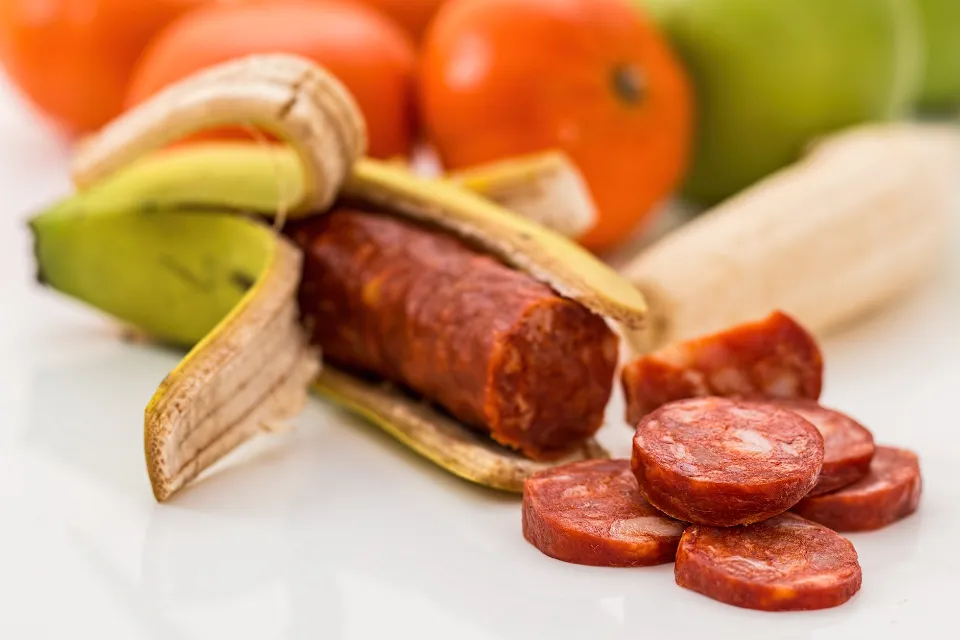
To help you eat less processed food, here are 10 easy, practical, and realistic strategies.
Any food that has been cooked, frozen, pasteurized, packaged, canned, or cooked is considered processed food.
Many processed foods, such as frozen fruits, canned vegetables, and pasteurized dairy products, are acceptable as parts of a healthy diet. The high levels of salt, sugar, additives, and preservatives in some highly processed foods, however, can be harmful to your health.
One of the best ways to improve your health and the standard of your diet is to cut back on these highly processed foods. Here we explain how to eat less processed foods.
Keep Healthy Snacks on Hand
It may be tempting to grab a prepackaged snack on your way out the door if you’re pressed for time. Making healthy decisions on the go can be made much easier by keeping your kitchen well-stocked with a variety of transportable, nutrient-dense snacks.
Fresh fruit, mixed nuts, edamame, and vegetables with hummus are some of my favorite healthy snacks.
Simple snacks can also be prepared in advance if you have extra time. Some delicious snacks that you can quickly prepare and store for later include hard-boiled eggs, turkey roll-ups, homemade kale chips, and overnight oats.
Swap Refined Grains for Whole Grains

Starting to replace processed foods with healthier whole foods is one of the simplest ways to reduce your consumption of processed foods. In particular, you can substitute whole grain alternatives for refined grains like white pasta, rice, bread, and tortillas, such as brown rice, whole grain pasta, bread, and tortillas.
Whole grains have been shown to be protective against diseases like heart disease, diabetes, and some types of cancer in addition to being higher in vital nutrients like fiber.
Get Creative in the Kitchen
By remaking your favorite processed foods in your kitchen, you can, if you’re feeling daring, give them a healthy twist. By doing this, you can experiment with tasty new ingredients while maintaining total control over what goes on your plate.
Slices of potato, zucchini, turnip, or carrot, for instance, can be turned into veggie chips by tossing them with a little salt and olive oil, then baking them until they are crisp.
Chia pudding, air-popped popcorn, granola bars, and fruit leather are some other at-home healthy substitutes for processed foods.
Personally, I prefer to attempt to prepare meals from my favorite restaurants at home rather than ordering takeout. Incorporating more ingredients like fruits, vegetables, nuts, seeds, and legumes, not only saves money but also makes it simpler to eat more whole foods.
Drink More Water
Sugary drinks with little to no essential nutrients, such as soda, sweet tea, fruit juice, and sports drinks, are high in calories and sugar. A great way to reduce your consumption of processed foods and raise the quality of your diet overall is to gradually substitute these drinks for water throughout the day.

If plain water isn’t your preferred beverage, sparkling water or flavored water are both excellent alternatives. You could also try adding fresh fruit or herbs to water to give it an extra flavor boost.
Try Meal Prepping
Once or twice a week, prepare meals in bulk to ensure that you always have plenty of wholesome food in the fridge, even when you’re too busy to cook. Additionally, it can greatly reduce the temptation to stop at a drive-through on the way home or to rely on frozen convenience foods when you’re pressed for time.
Set aside a specific time to prepare your meals and choose a few recipes to make each week to get started. In order to avoid repetition during the week, I also prefer to find a few recipes that use similar ingredients.
Eat More Vegetables
To increase your intake of nutritious, unprocessed foods, add at least one serving of vegetables to the meals you prepare at home.
Adding spinach to scrambled eggs, sautéing broccoli for a quick side dish, or incorporating carrots or cauliflower into soups or casseroles are all simple ways to achieve this. The high nutritional value and high fiber content of vegetables help you feel full between meals, reducing appetite and stifling cravings.
Switch Up Your Shopping Routine
When you don’t have any processed food on hand, it’s much simpler to keep your intake under control. Put wholesome, minimally processed ingredients like fruits, vegetables, whole grains, and legumes in your shopping cart the following time you go to the store.
The middle aisles, which are typically home to processed snacks and junk food, can be avoided by staying on the store’s perimeter. When you’re shopping, make sure to read the labels on your favorite food products. Foods high in sodium, trans fat, or added sugar should be avoided whenever possible.

Try Some Simple Food Swaps
Numerous healthy alternatives exist for many processed goods. Here are a few of my favorites:
- Change to a bowl of fruit-topped oatmeal instead of sugar-laden cereal for breakfast.
- As an alternative to microwave popcorn, make your own on the stove.
- Instead of using store-bought dressings, prepare a homemade vinaigrette with vinegar and olive oil to drizzle over salads.
- To replace store-bought varieties of trail mix with something healthier, make your own using nuts, seeds, and dried fruit.
- Instead of using croutons, sprinkle nuts or seeds on top of your salads.
Eat Less Processed Meat
The International Agency for Research on Cancer has even classified processed meats like hot dogs, bacon, sausage, lunch meat, and lunch meat as carcinogenic. You’ll be relieved to learn that there are many simple ways to reduce your consumption of processed meat.
You can start by simply substituting these foods for less processed meats like fresh chicken, salmon, or turkey. Other sandwich fillings, such as tuna salad, chicken breast, or hard-boiled eggs, can be used in place of packaged lunch meats.
As an alternative, you could consume more plant-based proteins like tofu, tempeh, tofu, and beans.
Make Changes Slowly
There’s no need to instantly cut out all processed foods from your diet.
In actuality, gradual change is frequently more effective and long-lasting in the long run. According to some research, making small changes to one’s lifestyle can help create habits that last a lifetime and gradually make difficult actions much simpler.

Try out one or two of the above tactics each week, then add more over the course of the following weeks. Remember that you can still occasionally eat out or consume processed foods as part of a healthy, balanced diet.
What Are Ultra-processed Foods?
Sunflower seeds are processed to remove the shell, whereas whole grains are processed to create sugary breakfast cereals, and the two processes couldn’t be more different. It is important to note that not all processed foods are created equally.
The utmost level of processing is found in ultra-processed foods. You already know that fields don’t grow frozen pizza or gummy candy worms. These are a few types of highly processed foods.
You’ll recognize ultra-processed foods because they:
- Include ingredients that you don’t typically keep on hand (Where can I find cellulose powder?)
- Are designed in a lab to be palatable and exactly the same every time
- Are often high in sugar, fat, oil, and sodium
- Often come in eye-catching packaging and are heavily advertised
Ultra-processed foods now make up almost 60% of our diet. They often lack fiber, vitamins, and minerals that would be available in whole foods or minimally processed versions.
Examples of ultra-processed foods include:
- Soda and energy drinks
- Packaged snacks, sweets, and bread
- Processed meats like sausages and hot dogs
- Candy and ice-cream
- Pre-prepared foods like pizza
- Sweetened yogurt and breakfast cereals
Diets higher in ultra-processed foods have been associated with:
- Increased rates of heart disease
- Breast cancer
- Type 2 diabetes
- Overweight and obesity
Conclusion: Eat Fewer Processed Foods
Don’t compare your eating preferences and habits to those of those around you; diet and health look different for everyone. Create habits that are right for you by paying attention to your body and what it needs, which may occasionally be white pasta or chips.
Consider making a few small changes rather than pledging to stop eating all processed foods. Try substituting fruit-infused water for soda and whole fruits for packaged fruit products, for instance. Making these minor adjustments to your diet can be a healthy way to cut back on sugar and other processed foods.
FAQs
What Can I Eat If I Can’t Eat Processed Foods?
Unprocessed or minimally processed foods: Think vegetables, grains, legumes, fruits, nuts, meats, seafood, herbs, spices, garlic, eggs, and milk. Build your diet around these real, whole foods.
Can You Lose Weight by Avoiding Processed Foods?
Over time, reducing processed food can help you lose weight. You might experience a drop in weight after removing the extra calories from unnecessary ingredients. “This lifestyle change can help you lose weight and prevent obesity,” said Weber. See How to Weigh Food to Lose Weight?
What Are the Symptoms of Too Much Processed Foods?
Added sugar, sodium, and fat are frequently present in unhealthy amounts in highly processed foods. These ingredients make the food we eat taste better, but too much of them leads to serious health issues like obesity, heart disease, high blood pressure, and diabetes. inadequate in nutrients.
